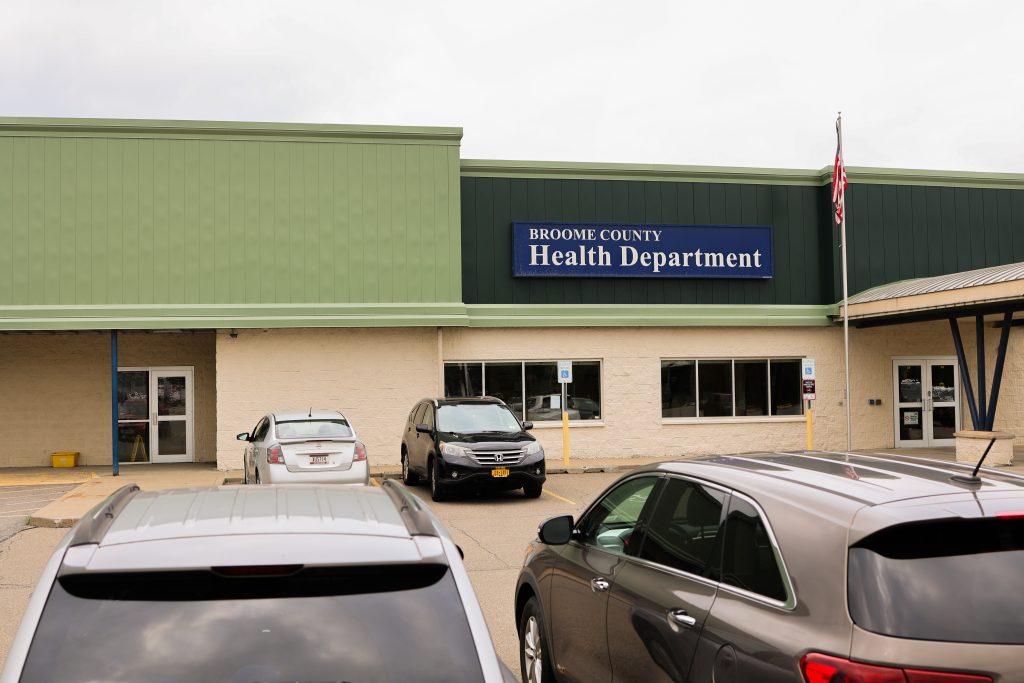The Centers for Disease Control and Prevention (CDC) has awarded Broome County a $4.5 million grant to reduce drug overdoses and fund prevention programs.
Awarded to the Broome County Health Department, the funds were issued as part of the CDC’s Overdose Data to Action (OD2A) program. First launched in 2019, OD2A partners with state, county, territorial and city health departments to support the implementation of improved overdose monitoring and prevention programs designed to better understand the changing nature of the current drug overdose epidemic, according to the program’s website. It promotes a data-based approach that emphasizes the role of local surveillance and the observation of statistics related to drug use to help recipients respond “more quickly, more effectively and more equitably” to the needs of their respective communities.
The recently announced grant is not the first instance that the Broome County Health Department has received funding from OD2A. During the first round of grant funding in 2019, OD2A awarded money to 66 separate entities that included both state and local health departments — including the New York State Department of Health. (4). BC’s Health Department then received a portion of the state funds, which was used to build core infrastructure for overdose prevention programs.
In August 2023, the CDC announced funding opportunities for up to 90 new jurisdictions that apply for OD2A grants, 40 of which would be either a county, territory or city health department. In a statement to the Binghamton Homepage, Marissa Knapp, the Broome County Health Department’s opioid overdose prevention coordinator, attributed the CDC’s approval to the steadfast support that members of the community and other stakeholders have demonstrated toward seeking a countywide solution to the opioid epidemic.
“We can’t take credit for the boots on the groundwork here,” Knapp said. “That goes out to all of our partners in the community who’s working with the population. So we were able to get letters of support from law enforcement, from our hospital systems, from our faith-based communities, from our elected officials, from our universities and schools and then also from the population of [people] who [use] drugs.”
According to the OD2A program website, each of the 90 local grant recipients will have their funds distributed from the CDC throughout a five-year cooperative agreement. Kristin Russell, the public health educator at the Broome County Health Department, identified several ways the funding will be used by the department to prevent drug overdoses.
“The $4.5 million is allocated specifically to Broome County over the course of [five] years to carry out prevention and surveillance strategies,” Russell wrote in an email. “The funding will go toward various projects that address [the following] — linkage and retention in care, harm reduction, stigma reduction, health care systems best practices and surveillance.”
The CDC’s efforts come as Broome County attempts to stem the tide of both suspected fatal and non-fatal overdoses. According to the Broome County Overdose Collaborative, there have been 45 reported cases of suspected fatal overdoses and 263 non-fatal overdoses reported within the county so far in 2023, representing a decrease in the number of overdoses reported compared with last year — where 80 fatal overdoses and 460 non-fatal overdoses occurred.
The department currently partners with several governmental and private organizations, including the New York State Department of Health and local media to implement both preventive and harm-reduction strategies that would lead to a decrease in opioid overdoses in the future. Partners also include law enforcement, who collect data on the type of substance used in each overdose case and prosecute drug dealers.
O2DA grant money will continue to fund both preexisting and new programs to further reduce the drug overdose rate. Russell shared additional practices that can be implemented by the county to achieve this goal.
“There continues to be work that can be done to lower the burden of overdose, including increasing access to treatment, encouraging harm reduction practices — carrying naloxone, using the Never Use Alone hotline, using fentanyl and xylazine test strips and providing rescue breathing — and decreasing stigma in the community, public safety and health care settings,” Russell wrote. “The goal of this funding is to address all these throughout the [five] years and support partners who are doing the boots on the ground.”
Despite the grant, Juan Naranjo, a Binghamton University sophomore majoring in computer science, said that he believes systemic root causes of addiction in the community will go untargeted.
“The grant provides much-needed assistance to Broome County in providing medical supplies to prevent overdose deaths while simultaneously educating the public about available programs for rehabilitation,” Naranjo said. “However, it’s important to note that this does not address the systemic roots which led to the increase of opioid use in the United States in the first place. Further examination of the allocation of the funds is necessary to ensure the general health and safety of the population because certain state actions, such as those by law enforcement justified by prohibition, have historically worsened the impact of the opioid crisis.”



